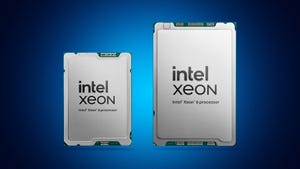New Tool to Measure and Improve Data Center Energy EfficiencyNew Tool to Measure and Improve Data Center Energy Efficiency
As the world heats up, data centers continue to look for new ways to keep cool and improve efficiency. The Green Grid hopes its updated tggTCO tool will help.

An updated tool from The Green Grid (TGG) promises to boost data center power consumption by 50% by allowing analysts to evaluate the tradeoffs and potential ROI before any major data center design and build.
With the risk that higher demand for compute-intensive applications will out-pace energy efficiency services, traditional data centers have been transitioning towards more sustainable methods like liquid cooling. In 2017, Andre Eriksen, CEO of Danish direct liquid cooling (DLC) company Asetek, told Bloomberg, “In the longer perspective, I believe that data centers will be liquid cooled.”
In a statement, TGG said it launched the updated Total Cost of Ownership Calculation Tool – dubbed tggTCO – to demonstrate how different liquid cooling methods impact a data center’s financial and operational ROI. In a statement, Erica Thomas, director of TGG said “as data centers grow rapidly, access to the most efficient best practices for their performance is an important element to enable industry innovation.”
Data Center Cooling Future Is Liquid
Almost two-thirds of data centers in the US experience higher peak demands, with a power density of around 15 or 16 kW per rack. A multi-dimensional, data-driven approach to climate-conscious cooling minimizes net-climate impact. In 2021, water cooling helped Google reduce the energy-related carbon footprint of its data center portfolio by roughly 300,000 tons of CO2 according to a report by Urs Hölzle, senior vice president of Google’s technical infrastructure.
Google is investing in technologies to help it reduce both energy and water consumption. In 2021, Google’s global data center fleet consumed approximately 4.3 billion gallons of water. The number is comparable to the water needed to irrigate and maintain 29 golf courses in the southwest U.S. each year.
Vendors other than TGG are enhancing their remote management solutions to improve data center energy efficiency. In February, QTS Data Center announced a 3-in-1 integrated monitoring system to augment its Service Delivery Platform.
Revenue for the liquid cooling market could top $3 billion by 2026, with a little over 50% compound annual growth rate (CAGR). That’s according to a Data Center Thermal Management Market Analysis recently issued by London-based Omdia (Informa is the parent company of Omdia and Data Center Knowledge).
Despite the advancement of cooling technology, liquid cooling is not a universal remedy, according to Dr. Moises Levy, senior principal analyst for data center power and cooling at Omdia.
“Liquid cooling systems may or may not be the ideal solution for a data center project,” Levy said. “The selection of liquid cooling instead of air-cooling systems has to do with various factors, including specific location, climate (temperature/humidity), power densities, workloads, efficiency, performance, heat reuse, and physical space availability.”
Still, liquid cooling promises to help address many of the challenges that come with air cooling systems, especially as computing densities increase. Long proven for mainframe and gaming applications, liquid cooling is expanding to protect rack-mounted servers in data centers around the world. This is particularly true as extreme weather and heat waves are expected to happen more frequently in the years to come.
Just last year, recorded temperatures in the UK hit 104℉, crippling data centers and crashing Google’s and Oracle’s cooling systems. In September 2022, Twitter’s Sacramento data center region lost power due to the extreme heat.
Data Centers Are on High Alert
Microsoft is introducing sustainability efforts including water cooling and temperature management at its data centers. It plans to reduce its water use in the centers’ day-to-day operations by 95% by 2024.
“Our latest research in liquid cooling addresses the concept of overclocking, which is to operate chip components beyond their pre-defined voltage, thermal, and power design limits to further improve performance,” said Noelle Walsh, Microsoft’s corporate vice president of cloud operations and innovation. “Based on our tests, we’ve found that for some chipsets, the performance can increase by 20% through the use of liquid cooling.”
The U.S. is also pushing for data center efficiency and sustainability. In late 2022, the U.S. Department of Energy (DOE) announced up to $42 million in funding to help develop high-performance energy-efficient cooling solutions for data centers. The budget is part of the Biden administration’s goals to reach net zero carbon emissions economy-wide by no later than 2050.
“Extreme weather events, like the soaring temperatures much of the country experienced…impact data centers, which connect critical computing and network infrastructure and must be kept at certain temperatures to remain operational,” said U.S. Secretary of Energy Jennifer M. Granholm.
Financial Push for Data Center Energy Consumption
As governments and investors push to make data centers greener, anticipate more web-based tools to live. Investors attracted to sustainability bet on assets meeting green expectations, especially when placing capital for the long term.
Climate-conscious cooling, more efficient IT equipment, smart and connected equipment, and green building standards are some ways data centers are becoming more environmentally friendly, according to Omdia’s Levy.
While tggTCO can be used by data center owners and operators to determine which cooling technologies – some companies are already changing and experimenting with – what could be – cost-effective builds for their data centers.
A Microsoft experiment to assess the feasibility of underwater data centers proved successful, with seawater acting as a coolant rather than traditional air conditioning units used on land. China has since launched its own underwater data center
About the Author
You May Also Like









